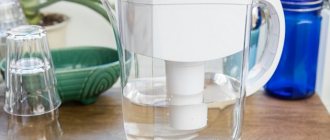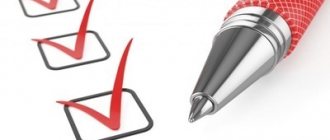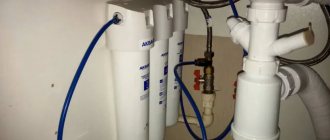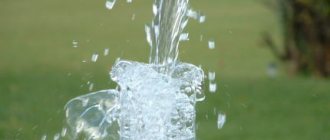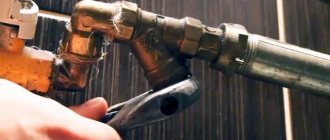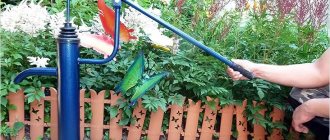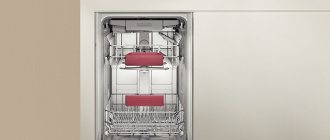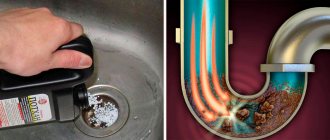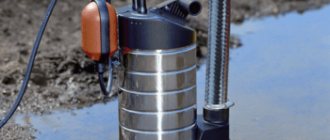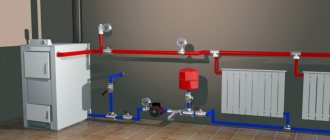Liquid flowing in a centralized water supply can only very conditionally be considered suitable for use for technical purposes - for laundry, washing dishes, etc. With a very big stretch, it can be used for cooking, but you can’t drink it without boiling it at all. To bring it to normal, it is necessary to use different types of filters to purify water. There are inexpensive installations, but they usually have low productivity and average cleaning quality, and there are expensive systems that can give ideal results.
To bring it up to standard, different types of water purification filters are needed
The situation is no better with water supply from a well or borehole. There is still a high probability of bacterial infection, so the cleansing should be even better. In general, you need to take the sample for analysis, and then, based on the results, select the required types of filters for water purification. In private homes, this is usually a multi-stage system, which results in drinking-quality water.
Do you need a filtration system at home?
A water purifier is necessary if you cannot drink tap water:
- it is cloudy and smells bad;
- with a taste of iron or rotten eggs;
- strongly reeks of chlorine.
Also, a filtration system is needed if the water pipes are old and rusty , because they are the source of:
- bacteria;
- silt;
- sand;
- gland.
Do you buy bottled water? As an alternative, you can install a water purifier, it will quickly pay for itself. But which model to choose depends on the quality of water and volume of consumption.
Preparatory work
The highest degree of water purification is provided by a reverse osmosis installation.
Before you begin to study the sequence of installing filters, you need to complete all the preparatory measures. They start by assembling some parts of the purification system, which are the plumbing connection. This is a small shut-off valve and tee. This work is carried out in two stages - assembly and installation of the unit on the water supply system.
- Assembling the working unit - inserts.
This stage does not cause difficulties, since it is only necessary to correctly and tightly connect the tee to the tap. One edge of such a tee is equipped with an internal thread of 0.5 inches, the second is external with 0.5 inches, and the third, intended for connection to the shut-off valve, has an internal thread with a smaller diameter. Fum tape or tow is tightly wound around the tap, after which this part is screwed into the tee and fixed well with a wrench. Now is the time to turn off the water supply and begin installing the prepared tap. Insertion of a tee and tap for supplying water to the filter - The next stage is more troublesome, but its implementation does not require special knowledge and skills. First of all, you need to find where the cold water pipe is located. It is equipped with a shut-off valve and needs to be twisted. The prepared working unit is mounted on the cold water pipe. Particular attention is paid to sealing the seams, otherwise the possibility of leaks cannot be ruled out.
After installation, it is recommended to check the functionality of the working node. To do this, place the small filter faucet in the closed position and turn on the water supply. If no leaks appear, you can begin installing the water purification filter.
What types are there?
Water filters can be divided into two types:
- Rough cleaning.
- Fine cleaning.
Let's look at each type of treatment system below.
Coarse filtration
To remove large impurities (from 50 microns), coarse filters are used.
They remove mechanical substances:
- sand,
- clay,
- silt,
- rust.
Filters with a large pore diameter extend the life of under-sink water purifiers, because if heavily contaminated water is immediately applied to the sorption cartridges or membrane, they will quickly become clogged and will not perform their functions.
Other equipment protects:
- heating system;
- toilet;
- boiler;
- dishwasher and washing machine from breakdowns.
Rough cleaning is the first and important stage of water preparation. The filter is installed in the main line, in close proximity to the central riser.
Its basic element is simple: a metal body, inside of which there is a steel/nylon/brass mesh with a pore diameter of 50-400 microns.
The smaller the cell size, the more dirt will be retained . Next to the mesh there is a settling tank - a place for impurities. It is washed manually or automatically.
Types of coarse filters:
Sump. This is a non-flush flange or coupling water purifier. Its sump is located horizontally or at an angle to the water pipe.
To clean the sump, you need to turn off the water, unscrew the lid, take out the sump and rinse. Since its size is small, manipulation is carried out frequently.The straight design mesh filter is more convenient. There is a drain valve at the bottom of the housing. You place a basin under it, open it, and the dirt drains out.
- Cleaner with flushing system . It is equipped with two pressure gauges - at the water inlet and outlet. Sensors measure pressure, and if after cleaning the pressure is lower than at the inlet, it means the cells are clogged. In this case, flushing starts - the valve opens, and the dirt is drained through the drainage pipe into the sewer.
- Cartridge system . The device consists of a flask, inside of which there is a replaceable module made of polypropylene or polyester. It is changed when it gets dirty. The equipment works even at low pressure in the water supply, while mesh water purifiers are ineffective.
Fine filtration
Fine filters are used to remove 98-99% of contaminants.
They are divided into two large groups:
- Sorptive.
- Membrane.
In the first case, cleaning is carried out by replaceable modules, inside of which there is:
- Activated carbon;
- blue clay;
- foamed graphite;
- quartz;
- zeolite;
- ion exchange resins.
Manufacturers create their own materials that remove harmful impurities.
Sorption systems capture:
- active chlorine,
- mechanical impurities,
- heavy metals,
- suspended particles,
- hardness salts,
- get rid of color and turbidity.
Reference! The cartridges perform their task for 3-12 months, and during this time they filter 4000-12000 liters. After the resource has been exhausted, the replaceable module must be replaced, because it stops capturing impurities.
Sorption cartridges are installed in:
- filter jugs,
- multi-stage flow systems for washing,
- in faucet fittings.
The membrane filter is the heart of a reverse osmosis water purifier.
Semi-permeable material with pores of 0.00001 microns captures 99% of all existing impurities, allowing only water molecules and some gases to pass through.
The reverse osmosis system ideally copes with increased hardness , but in order for it to work correctly, the water needs to be pre-treated.
It is performed by sorption cartridges, which were described above. The membrane unit is installed in classic reverse osmosis systems with a storage tank, in new generation water purifiers without a tank and in some jugs.
Attention! The membrane needs to be changed every 1-4 years.
Features of the design of filters for washing
Despite the fairly simple design and principle of operation, filters of this type contain a large number of components and elements. Therefore, installing a water filter yourself should be in accordance with the complete set of the product.
The composition of the filter part is determined by the user's choice. The number of cartridges and, accordingly, purification stages is from 2 to 6, and their type is selected in accordance with the quality of the source water. Since the cost of the filter directly depends on the number of stages, in some cases it is advisable to strengthen one direction of cleaning, saving on the other.
For example, if there is sand and other types of mechanical impurities in a liquid whose composition meets quality requirements, you can do without an iron removal cartridge by installing an additional sorption filter instead.
The under-sink filter may include:
- carbon cartridges for mechanical cleaning,
- deferrization,
- mechanical filters for solid suspensions,
- softeners for removing hardness salts,
- reverse osmosis membranes,
- mineralizers that optimize the composition of the liquid,
- UV lamps for disinfection.
In addition to cleaning modules, the design is equipped with:
- bracket-console for mounting on the wall,
- a device for connecting to a cold water supply pipeline (adapter or tee) with a valve installed at the insertion point and regulating the water supply,
- gaskets for connections,
- faucet installed on the sink.
For ease of use, the kit may include a storage tank that ensures water supply, despite the decrease in pressure when passing through filters and especially through a reverse osmosis membrane.
The contents of the reverse osmosis water filter may vary depending on the manufacturer and model.
Which water system to choose for your home?
To ensure maximum cleaning efficiency, it is advisable to undergo laboratory analysis . It will show how many and what pollutants are contained in the sample.
You can take the water to the city SES or to a private laboratory. Based on the results, you or a specialist will select the optimal system.
Well-known manufacturers offer equipment analysis and selection services for free or at a minimal price, provided that you make a purchase from them for a certain amount.
If you are looking for a system yourself, consider the following criteria:
Average consumption of drinking water. One person needs about 120 liters of clean liquid per month. Multiply this number by the number of family members and you will get the average cost.When choosing a filter, pay attention to its resource. Please note that some replacement modules last 3-6 months, and during this time you must use the entire resource.
If, for example, you do not spend 8000 liters in six months, then pay attention to systems with a shorter resource - they will be cheaper. When fluid consumption exceeds the stated service life, you will have to change the cartridge sooner.
- Quality water without filter. The most common problem is hardness and high chlorine content. You will notice them by the scale on the walls of the kettle and the characteristic smell.
It is impossible to determine the concentration of contaminants by eye, but it is important to know the exact indicator in order to understand which filter is needed - sorption, membrane or jug. More details about the nuances of choosing each type are written below.
- Free space , technical capabilities.
The nozzle on the faucet and jug takes up the least amount of space. Next comes progressively - a flow-through filter under the sink, a reverse osmosis system. When you read the description of a model, always pay attention to its dimensions and consider whether the structure will fit in the installation location. Also think about whether you have the opportunity to install the system yourself or whether you need to invite a specialist. Or maybe you don’t want to “interfere” with the plumbing system at all, then you can get by with a jug or nozzle. - Service features , price.
It is not enough to buy and install a filter. It is necessary to change cartridges every 3-12 months or install a new membrane every 1-4 years. Softening replaceable modules must be regenerated every 3-6 months, and the main filters must be washed. Modern designs are extremely simple, so even an inexperienced user can replace cartridges. When choosing a filter, be sure to look at the cost and service life of replacement modules, and compare offers from different manufacturers.
When is a jug sufficient?
A small filter module with sorbent is installed in a plastic housing.
You pour water into the funnel, it passes through the cartridge and enters the jug. The design is simple and convenient if the consumption is small.
The cartridge resource is 250-500 liters, which is enough for 1 person for 2-3 months.
Reference! Depending on the internal contents of the cartridge, emphasis is placed on cleaning from chlorine, hardness, microorganisms and mechanical particles. On the packaging, the manufacturer writes what task the replacement module performs.
A jug is enough for you if:
- The water is of normal quality, you just want to further purify it.
- There is no space for structures under the sink.
- Drinking water consumption up to 500 l/month.
- Are you ready to change cartridges every 1-3 months?
- You are not bothered by slow filtration and the need to frequently fill the jug.
- You don't want to shell out a lot of money at once.
When can you get by with a faucet attachment?
This is a more compact alternative to a jug that fits over the faucet spout. Modules for attachments have an increased resource compared to jugs - 750-1000 l, filtration rate 0.2-0.3 l/minute. The cleaning quality is good.
The nozzle will suit you in the following cases:
- There is no room in the kitchen even for a jug.
- Do not be embarrassed by the fact that when you need untreated water, you will have to remove the nozzle.
- You are ready to wait for the water to filter (1 glass is filled in 60 seconds). During this time, the tap cannot be used to collect water for other purposes.
When is a flow sorption purifier necessary?
If the water hardness is 4-8 mEq/l, and the amount of iron, chlorine, and mechanical particles is moderate, a flow filter will cope with the task. Standard systems are three-stage, but there are also 4-5-stage models.
Each block performs its own function:
- in the first stage, mechanical impurities are more often removed;
- on the second, softening/deferrization/universal cleaning occurs;
- in the third, the smallest contaminants are removed and the water is conditioned.
Reference! The resource of the modules is 4000-12000 l, service life is 3-12 months.
A flow-through system is right for you if:
- The water is of average quality with a moderate content of impurities.
- There is a place under the sink, and you are ready to tinker with the installation.
- There are 2 or more people in your family.
- Every 3-12 months, or even earlier, you will buy new replacement modules and change them. To ensure maximum cleaning efficiency, you need to monitor the consumption of drinking water.
Where should you install a reverse osmosis system?
This installation will be required when water hardness is in the range of 8-12 mEq/l. The water supplied to the membrane should not contain petroleum products or other organic substances.
Required concentration:
- iron and chlorine – up to 0.1 mg/l,
- manganese – up to 0.05 mg/l,
- suspended particles – up to 0.56 mg/l,
- oxidability – less than 4 mgO2/l.
These parameters are achieved thanks to preliminary cleaning using sorbing and iron-removing cartridges.
A reverse osmosis system is suitable for you if:
- The water is very hard.
- There is space under the sink for the system and storage tank.
- The pressure in the water supply is at least 3 atm, or you can buy a pump that will bring the pressure to the desired level.
- You are ready to install a main filter if there are a lot of mechanical particles in the water. Otherwise, the membrane will clog and performance will decrease.
- You don’t mind draining about 3 liters of contaminated water for every 1 liter of clean liquid.
- You are not afraid of too pure water without minerals and necessary salts.
We recommend an article on the topic
Features of water filters for sinks with reverse osmosis: rating of the best models, installation rules
When is a line cleaner needed?
Installation is necessary if you want to protect your plumbing from damage and extend the life of flow-through structures.
A backbone system is suitable for you in the following cases:
- There are many large mechanical impurities in water that are visible to the naked eye.
- The water is cloudy, with a yellowish or brown tint. After settling, sediment remains at the bottom.
- A rusty coating forms on the toilet, and white marks remain on the parts of the washing machine, on the faucet, and in the shower.
Conclusions and useful video on the topic
This video will help you correctly determine the main differences and advantages of flow and reverse osmosis filters:
In the next video we will talk about reverse osmosis systems. Here are the specific results of measurements of the main water indicators:
In conclusion of the article, it should be noted that both categories of filters allow you to obtain water of the required purity. You can find suitable equipment for any water supply system, regardless of your budget.
The accuracy of the choice will be significantly influenced by a preliminary analysis of tap water. This will allow you to understand how hard the water is, which microelements are in excess, and which minerals are in short supply.
Would you like to talk about which filter was chosen and installed in the water supply system to prepare drinking water? Do you have useful information on the topic that may be useful to site visitors? Please write comments in the block below the text of the article, post photos and ask questions.
The best manufacturers
| Name | Description | Products | Popular models and prices |
| Aquaphor | It has existed for 27 years (since 1992), founded in St. Petersburg. It occupies about a third of the Russian market of household water purifiers. | jugs; faucet attachments; main filters; flow sorption filters; reverse osmosis systems; softening and iron removal systems; complex water treatment systems. | Jug Aquaphor Provence A5 – 700 rub. Three-stage sorption filter for washing Aquaphor Crystal – 3500 rub. Reverse osmosis Aquaphor Osmo 50 version 5 – 7100 rub. |
| Barrier | Founded in 1993, it is part of the international holding BWT BARRIER, which is one of the top 5 leading global market players. The company occupies more than 40% of the Russian market. | jugs; flow sorption filters; reverse osmosis systems; main filters; prefilters; shower filters; equipment for cottages. | Prime Opti-Lite jug – 1250 rub. Flow filter EXPERT Standard – 5400 rub. Reverse osmosis system PROFI Osmo 100M – 15,100 rub. |
| Geyser | The company was founded in 1986. Widely known in Russia, products are sold in more than 20 countries around the world. | all types of household filters; water purifiers and components for cottages; industrial filters. | Dolphin jug – 450 rub. Three-stage filter Geyser Classic – 4000 rub. Geyser Nanotek membrane filter – 10,000 rub. |
| Atoll | The trademark belongs to . Atoll equipment is assembled from components from European and American manufacturers. | main filters; flow sorption and reverse osmosis water purifiers; water treatment systems for cottages. | Ultra-filtration flow filter Atoll U-31s STD – 9200 rub. Reverse osmosis system Atoll A-550 STD (A-560E) – RUB 13,800. Main filter Atoll I-12BB-e STD without cartridge – 6400 rub. |
| Prio "New Water" | Has been in existence for 23 years (since 1996), since 2006 - member of the International Water Quality Association. None of the above companies received this title. | flow-through systems under the sink and next to the sink; reverse osmosis; main filters; jugs; shower filters. | Gold jug – 1110 rub. Multi-stage filter for sink Expert M305 – RUB 5,200. Direct-flow reverse osmosis system Econic Osmos Stream OD310 – RUB 12,800. |
Where to buy?
water filters from official online or offline stores from manufacturers.
If there is no representative office in your locality, look at the list of distributors with whom the company cooperates.
By purchasing a water purifier from a trusted place, you will protect yourself from being deceived by scammers who pass off fakes as originals.
Attention! When purchasing, pay attention to the integrity of the box, the packaging (check the presence of each part according to the design), and the absence of mechanical damage to the product. Also make sure that the warranty card is filled out and has the seller’s stamp on it.
Basic operating rules
- It is important to promptly change cartridges in filters that have exhausted their service life. Old consumables not only reduce the overall performance of the filter, but also pose a serious threat to human health. Dirt accumulates on their surface, which gradually increases, breaks into components and enters the human body.
- Water filters should be used constantly. If for some reason it has been offline for a week or more, it is imperative to clean it and replace the cartridges. During downtime, the contaminants that have accumulated on the surface turn into an excellent breeding ground for many microorganisms.
- An ordinary jug cannot completely purify water. Even if it contains cartridges with several active substances, they still cannot completely cope with all impurities. Therefore, it is important to think about installing other equipment for hard water, if this is really necessary.
Of course, these are general recommendations. You can find out about all operating conditions in the detailed instructions that come with the equipment, or ask for help from a consultant. A full range of reliable water filters of various types from the world's leading manufacturers (Atoll, BWT, Omoikiri, Aquaphor, Geyser, Barrier) at a competitive price is presented in the MoykiPlus online store. Delivery of goods is carried out in Moscow by courier and to other cities of the Russian Federation by postal services. For purchases over 8,000 rubles, delivery is free. All products sold are guaranteed. You can place an order by phone with the help of a manager or through the shopping cart on the website.
Follow our promotions, which will allow you to purchase equipment at an even better price.
